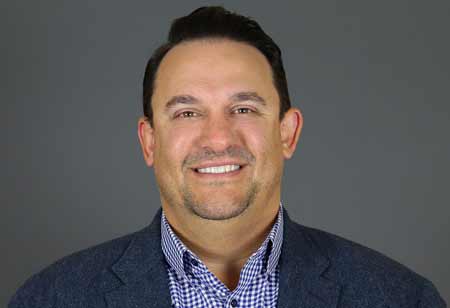Thank you for Subscribing to Healthcare Business Review Weekly Brief

Technological Advancements in Sports Medicine and Athletic Training
Healthcare Business Review
Matt Repa is the director of sports medicine and athletic training at Illinois Bone and Joint Institute. He has been associated with the institution since 2004 and has been practicing orthopedics with the institute since 2007 after he received his bachelor's degree in athletic training and physical education. His main clinical focus is on developing programs for baseball players, who are evaluated before and after each game to determine whether they have taken necessary measures to correct strains or injuries. Matt believes that with technology in the market, it is easier to evaluate and diagnose these athletes to help make better and safer return-to-play or returned activity decisions.
What according to you as some of the challenges plaguing the sports medicine and athletic training service and how they can be effectively mitigated?
Every service industry, including the healthcare sector, faces unique challenges. The difficulties we face with staffing and installation make it more challenging for our work to be more personal. Even though technology has aided in tackling the aforementioned challenge, there is still a dissonance between technology and skilled quality providers. When there are staffing shortages and high attrition rates, it can be challenging to deliver quality results with value-based outcomes.
I think technology plays a role in speeding up the correct access point to the correct provider. So you're not wasting your time on cross-referencing if we could connect it directly right away.
What technological trends and advancements have you observed in the sports medicine and athletic training sector over the last couple of years?
The two most important aspects of sports medicine are data access and quick timelines for recovery. Athletes and coaches must be able to receive a full performance analysis on time. Robots, portable X-ray scanners, and even a spit test to detect concussions can be utilized to assist players immediately on the field.
Third-party firms such as Amazon are also conducting technological developments such as live analytics programs that record performance data during practice sessions. Technology and actionable data are on the rise. The problem, however, is identifying sufficiently qualified skill providers who can evaluate data and then produce a solution that is consistent with the data.
How do you envision the future of sports medicine and athletic training services in a few years?
I feel it is a blend of solutions at various levels. Users of sports medicine and athletics services want to pay for results. To pay for performance and yield significant outcomes, you must have qualified personnel and trained people who deliver quality results. I consider that technology assists in the acceleration of the right access point to the right provider. This is a big achievement. Also, healthcare technology is still in its early stages, so we are witnessing a huge wave of hope. In the otherwise downward spiraling market, the rise in virtual and telemedicine has contributed to the rise in healthcare delivery. I believe that a large portion of this virtual onslaught is here to stay combining all of that information to match the appropriate patient with the appropriate provider. That's a blend I expect to see in the years ahead, especially in the orthopedic and sports medicine field, where insurers will guide patients to doctors who deliver high-quality results. Consequently, there will be little to no readmissions, and re-injury rates.
Do you have any advice for industry veterans or budding entrepreneurs from the sports medicine and athletic training services arena?
My advice would be to specialize in customer service, both on the B2B and B2C, even though you could have excellent technology, there is a scarcity in quality professionals who are acquainted with the knowledge of utilizing it from a provider's perspective. So, my main advice is to provide exceptional customer service because ease of use is what that market requires right now.









